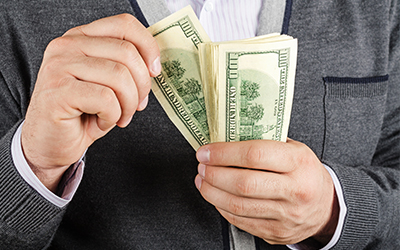Posted on Feb 10, 2014
Image Credit: © Dreamstime.com
Check the Bottom Line: Profitability Impact on a Dental Practice Appraisal
Main Content A+ A- A
An NAPB dental practice broker sees many scenarios when it comes to dental practice transitions. In an effort to save yourself a tremendous amount of time and trouble, let’s look at a few case studies to safeguard your primary asset—your dental practice.
By educating yourself and paying attention to profitability, you can be well-positioned when you arrive at your dental practice transition. First and foremost, look at expenses, especially competitive vendor products and services. These expenses often are inflated and they can greatly impact your bottom line.
Case Study #1: Dr. X has a practice running along smoothly. He is getting ready to retire in a few years. He is operating under the assumption that when selling a dental practice, the practice is worth about 65% to 75% of the previous year’s gross revenue. There are a number of factors that influence those percentages and therefore influence the dental practice valuation.
When crunching the numbers, Dr. X noticed that his net income had not kept up with his steadily-increasing gross revenue. Dr. X had some overhead that needed to be trimmed down before listing the practice. Specifically, his hygienist had a brother-in-law who provided dental supplies. Therefore, it had been quite some time since she had looked at pricing from other vendors. When she shopped competitively and shared the other vendor offers with her brother-in-law, he was able to meet their pricing, reducing his prices and saving the practice money.
Case Study #2: Dr. Y is new to practicing dentistry, but she is interested in keeping her practice as profitable as possible. She is building her practice at a steady rate, developing and cultivating patients, and becoming established in her new community. When she looked over her books, she found that her lab costs were higher than the industry average.
Lab expenses usually run about 9% of gross income and her lab expenses were at 12%. She sent all her lab work to a lab operated by a friend from dental school (and had done so since opening), but when she did some comparison shopping, she found that other labs offered the same services at a much lower cost. Dr. Y’s friend wasn’t able to match the other vendor’s pricing so she switched labs and saved 3% of her gross income, about $12,000 every year.
It’s a good idea to keep an eye on expenses whether you are just starting out or contemplating retirement. Some seemingly small changes can have a considerable effect on your dental practice appraisal—a vital part of pricing when you are ready to sell a dental practice.
A local dental practice broker can be an imperative resource to define the appropriate percentage ranges for expenses in order to keep your dental practice profitable. Call for a free consultation today.

